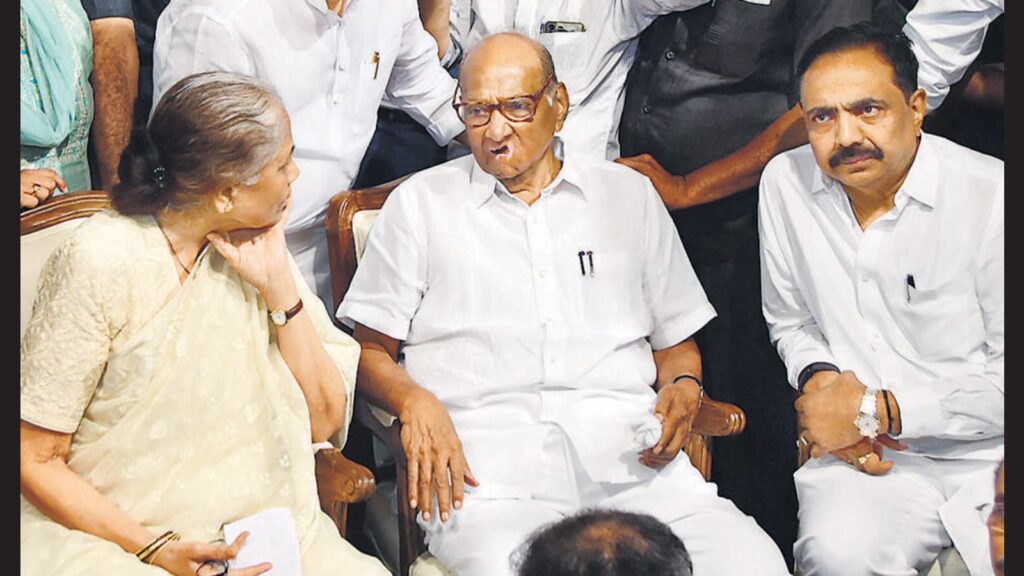The question that has roiled Indian politics countless times over the past five decades was revived on Tuesday after the Nationalist Congress Party (NCP) patriarch dramatically resigned as the chief of his party, prompting an outpouring of emotions among the NCP rank-and-file, only to partially walk back the decision later in the day and say he would reconsider the resignation. Various theories are swirling around – that he wants a bigger role in national politics, that he wants to outsmart his nephew and former Maharashtra deputy chief minister Ajit Pawar, that he wants to push his daughter and three-time MP Supriya Sule. But the man who is arguably India’s most pragmatic and maverick politician has kept his cards close to his chest, like he has since his first rebellion in 1978. But three developments playing out simultaneously in the background may offer some context for his move.
The first and most prominent are the persistent rumours around Mr Pawar’s nephew Ajit Pawar and a possible dalliance with the BJP. Speculation has mounted over the past few weeks that a significant chunk of NCP lawmakers may be ready to jump ship, though Ajit Pawar has sought to scotch these rumours. By resigning, Mr Pawar has stamped his authority on the party – a tactic once used by Bal Thackeray to reinforce his grip over the Shiv Sena – and shown that he still commands the unwavering loyalty of the grassroots worker. If there was a rebellion plan afoot, this show of strength will make those lawmakers think again.
The second is over the fate of the Maha Vikas Aghadi (MVA), the coalition of extremes that Mr Pawar helped birth and held together. Despite losing power, the MVA has endured and even tasted some measure of success in bypolls and local agriculture body elections. Though he has said he will continue to remain in politics, without Mr Pawar handling the everyday matters of the NCP, the focus will be on the person who takes charge of the party. It is difficult to see how the MVA will not be hurt by Mr Pawar’s withdrawal from active state politics.
And the third is the emerging dynamics in Delhi, where Opposition parties are looking to forge a common platform to take on the Bharatiya Janata Party. Like he did in 1999 or 2004, Mr Pawar may see a larger role for himself in Delhi, and that may be driving his decision to recede from the everyday hurly burly of Maharashtra politics. He may be looking to play a part like Leftist stalwart Harkishan Singh Surjit did in 2004 to bring together the Left and Congress, but the BJP still holds the edge in 2024 and the Opposition is still in disarray.
As Mr Pawar has shown time and again, it is futile to speculate on his plans, and only time will clarify his motives. For now, the grand old man of Indian politics appears to have one last ace up his sleeve.
Enjoy unlimited digital access with HT Premium
Subscribe Now to continue reading


